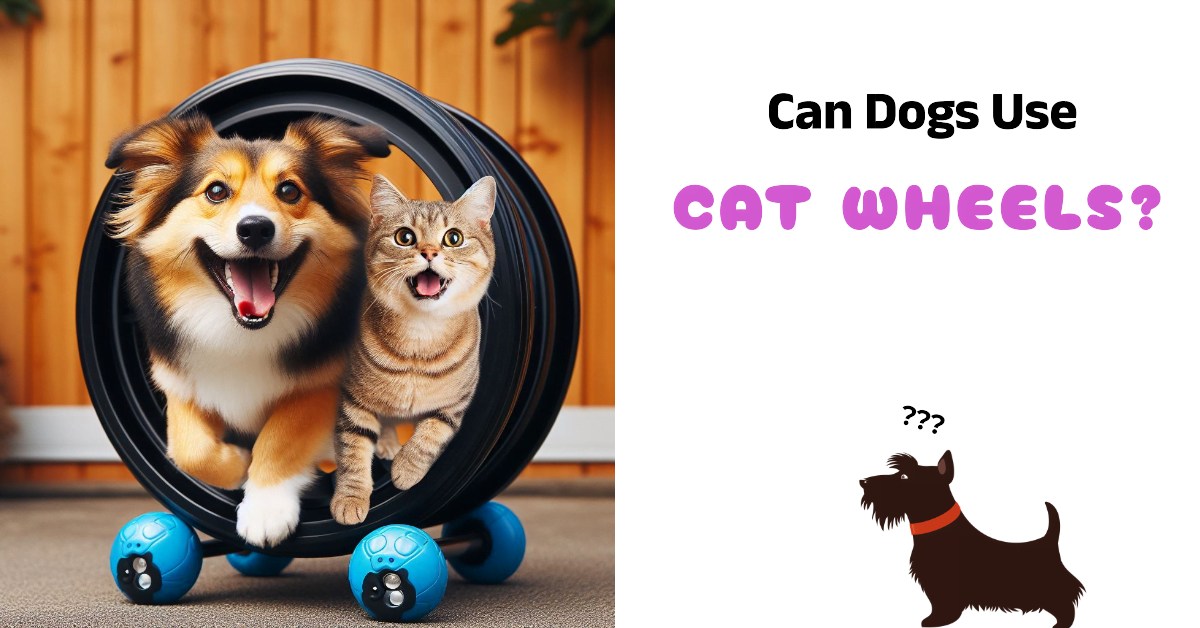This post contains affiliate links and I will be compensated if you make a purchase after clicking on my links.
Unleashing Fido’s Curiosity: Can a Dog Use a Cat Wheel?
Picture this: Fido locks eyes with Fluffy’s sleek, spinning exercise wheel, a gadget that’s become the latest rage among the tech-savvy pet crowd. It’s a scene that not only tickles our fancy but also stirs a playful curiosity. Cat exercise wheels, after all, are designed to tap into feline instincts, offering cats a way to expend energy and stay mentally engaged within the comfort of home. But as Fido’s intrigue grows, so does a compelling question among pet owners: Can a dog use a cat wheel?
Yes, it’s possible, though the suitability largely depends on a dog’s size, temperament, and curiosity. Let’s dive into this fascinating possibility and see how technology is blurring the lines in pet fitness.
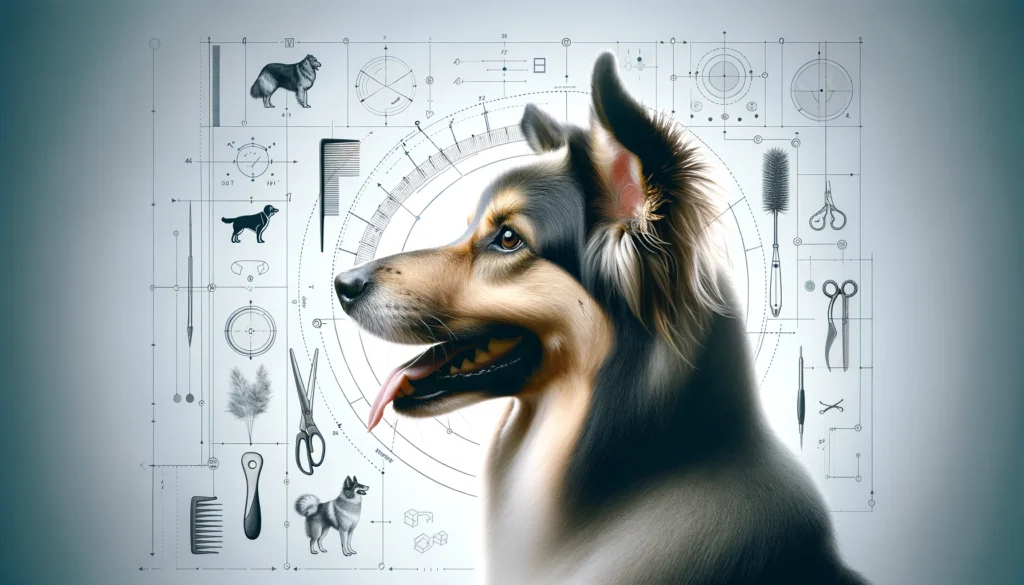
Exercise Wheels: Can They Work for Both Dogs and Cats?
Before we let Fido take the wheel, so to speak, there’s a bit of homework to do. Choosing the right cat wheel involves careful consideration, a topic we’ve delved into in our detailed guide on selecting the perfect cat wheel for your whiskered jogger.
Now, if you’re thinking about letting your pup try out this feline apparatus, those same factors—size, durability, and crucially, the impact on their spine—must be carefully considered to ensure a safe and enjoyable experience. Before you let your dog have a go on the cat wheel, it’s essential to weigh all these aspects.
However, if your canine buddy is on the larger side—think German Shepherd rather than Jack Russell Terrier—using a cat wheel is a definitive no-go. The wheel simply isn’t built to accommodate the size and energy of our larger furry friends.
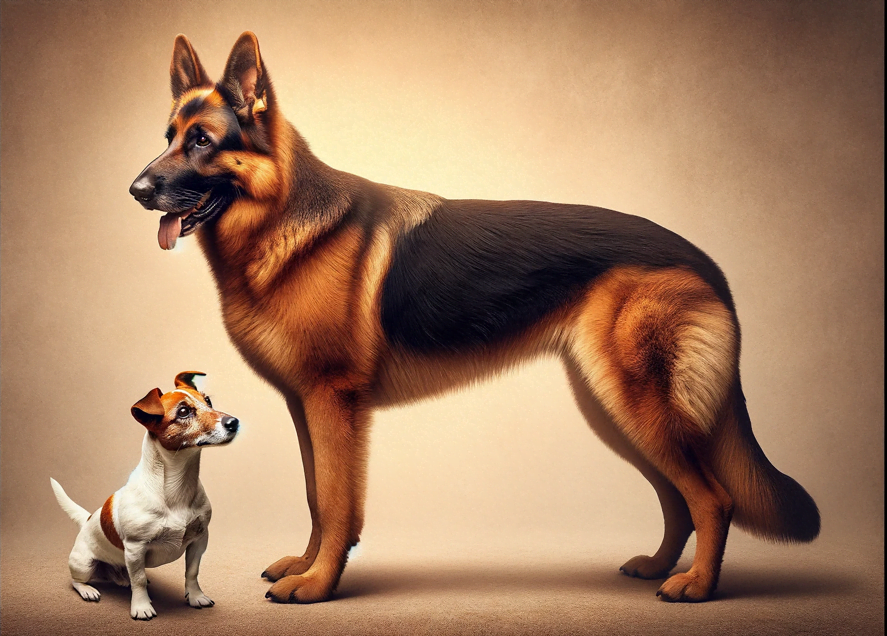
While large energetic breeds may still enjoy a good run on a big wheel, a cat wheel is not the appropriate option. The alternatives are:
- Purchase a pet wheel specifically designed for large dogs, but be prepared, as they can be expensive.

- If you’re handy and enjoy DIY projects, consider creating one yourself.
It’s crucial to remember that this doesn’t replace their daily walks and romps in the park. Think of it as an additional tool to spice up their exercise regimen and keep their tails wagging with joy.
Determining Whether Your Dog Can Use a Cat Wheel
Before we dive into the specifics of measuring and weighing to find the perfect fit for your furry friend, let’s explore the types of dog breeds that are generally more suited for a cat wheel. This initial overview will give you a clearer picture of whether your dog might be a good candidate for this unique form of exercise.
Suitable Dog Breeds
1. Small Breeds
Generally, small breeds are more likely to be compatible with cat wheels due to their lighter weight and smaller size. Breeds such as Chihuahuas, Pomeranians, and other toy breeds might physically fit the wheel, but interest and temperament can vary widely even within small breeds.
2. High-Energy, Playful Dogs
Dogs that have a high energy level and enjoy engaging in play might be more inclined to try out a cat wheel. Breeds like the Italian Greyhound or Miniature Pinscher, known for their playful nature, could potentially enjoy the wheel as a novel form of exercise.
3. Breed-Specific Preferences
Beyond size and energy, consider your dog’s breed-specific instincts and behaviors. For instance, breeds with strong chasing instincts, like Whippets or Jack Russell Terriers, may find more joy and engagement in wheel running, mirroring their natural tendencies to pursue. Conversely, breeds less motivated by such activities might not find a cat wheel as appealing or engaging.
4. Younger Dogs and Puppies
Regardless of breed, younger dogs and puppies are often more curious and willing to explore new toys and experiences. They might be more open to trying a cat wheel, provided it’s safe and appropriately sized for them.
Safety Check: Is the Cat Wheel a Go for Your Dog?
Before envisioning your doggo taking a joyous spin, let’s ensure it’s a safe endeavor. The key to a tail-wagging good time on the cat wheel boils down to two crucial checks: measuring up and weighing in.
Follow this simple process to determine if your cat wheel is a safe playground for your pup:
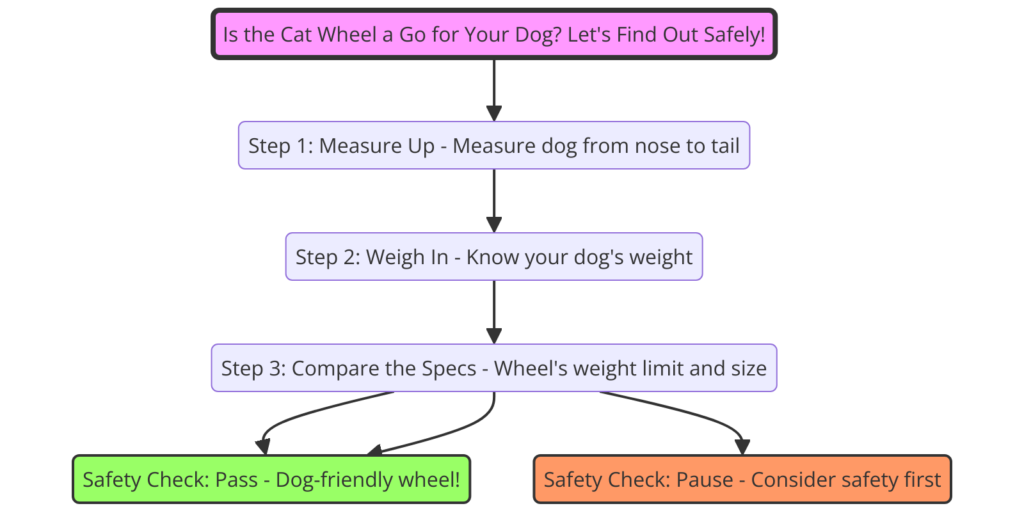
Step 1: Measure Your Dog’s Length
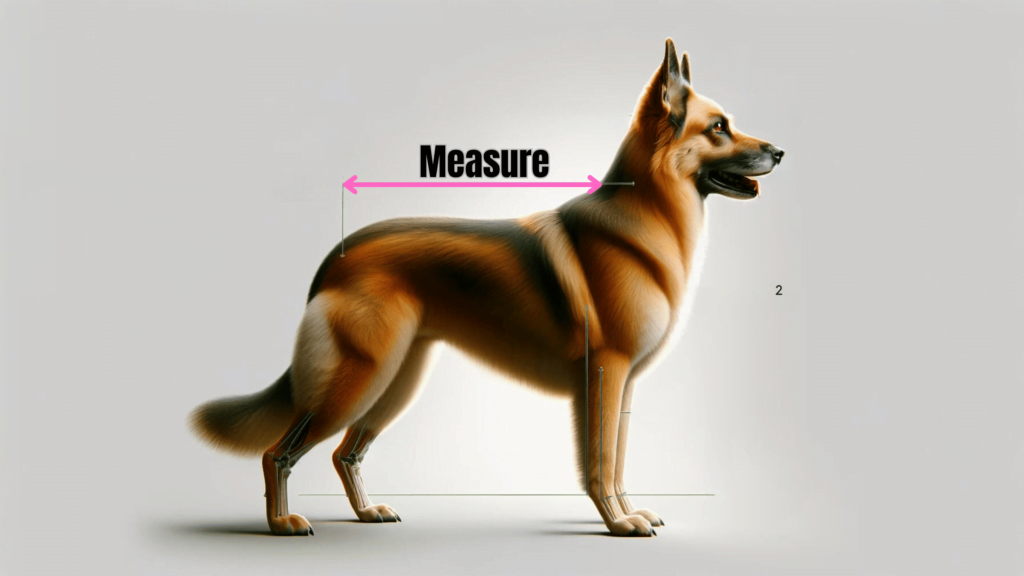
Grab your measuring tape and let’s get to work. Measure your dog from nose to tail tip. It’s not just a fun bonding activity; it’s essential homework to ensure their comfort on the wheel. Remember, a snug fit isn’t what we’re after; we want room to stride!
Step 2: Weigh Your Dog

Next up, let’s see what the scale has to say. Knowing your dog’s weight is crucial—not just for the cat wheel but for all aspects of their health. Ensure your cat wheel’s specs can handle your dog’s weight. This isn’t a place for guesswork; precision is key.
Step 3: Compare the Specs
Armed with your dog’s measurements and weight, it’s time to play detective with your cat wheel’s specifications. The golden rule?
The wheel’s weight limit should comfortably support your dog’s weight, and its circumference (internal wheel diameter) should be at least 1.5-2.5 times your dog’s length. This ensures enough space for your dog to move without feeling cramped or risking injury.
Step 4: Safety Check: Pass or Pause?
If your cat wheel checks off both requirements, you might just have a dog-friendly wheel on your hands! However, if there’s any doubt or the specs don’t align, it’s better to err on the side of caution. Remember, the joy of play should never compromise safety.
Practical Example: Determining If a Dog Can Use a Cat Wheel
Let’s take a closer look through a hands-on example, focusing on my very own HomeGroove Cat Wheel. This cat wheel comes with the dimensions of 35.3″L x 13.5″W x 39.3″H and claims a robust weight capacity of up to 110 pounds, which, to be honest, I find a bit optimistic.
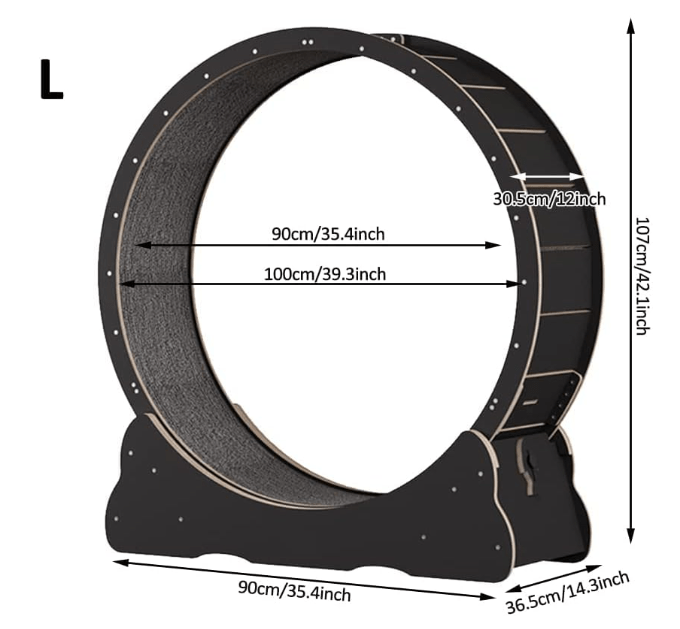
Now, considering my Pomeranian, who’s a bit on the larger side for the breed, with a length of 12 inches, the question arises: Can my fluffy companion safely use this cat wheel?
By comparing the dimensions of the HomeGroove Cat Wheel with the size of my Pomeranian, the wheel appears to offer enough space for my dog. The length and height of the wheel should comfortably accommodate my Pomeranian’s size, allowing for a range of movement from a leisurely walk to an energetic run.
Furthermore, with the wheel’s weight capacity far exceeding the average weight of a Pomeranian, even a larger one like mine, it suggests a generous safety margin.
Better Alternatives to a Cat Wheel for Dogs
Instead of retrofitting cat tech for canine use, let’s explore some pawsome alternatives that are tailored for dogs. These options not only cater to their exercise needs but are also designed with their safety and enjoyment in mind.
1. Leash Walking

Leash walking goes beyond the circular path of a cat wheel. It offers an array of stimuli and experiences no wheel can replicate.
From the vast array of smells and sights to the social interactions at dog parks, leash walking tailors perfectly to your dog’s exploratory instincts and need for variety.
Got a dog park nearby? That’s a bonus round!
Dog parks offer a splendid mix of socialization and freedom, letting your dog sprint, explore, and make pals in a safe, enclosed area.
2. Interactive Puzzle Toys
While a cat wheel challenges the body, interactive puzzle toys challenge the mind, addressing the crucial aspect of mental stimulation.
These toys provide puzzles that keep dogs engaged, solving problems and reducing boredom. It’s an exercise of the brain, offering satisfaction and rewards that physical exercise alone can’t always provide.
3. Agility Training Equipment
For the high-energy pup who might find the straightforward nature of a cat wheel limiting, setting up agility training in your backyard introduces varied physical challenges.
This not only keeps your dog physically active but also mentally engaged, offering a richer and more rewarding experience that strengthens the bond between you through teamwork and shared achievement.
4. Tug-of-War and Fetch Toys
Lastly, the simple joys of tug-of-war and fetch tap into dogs’ instinctual desires to chase and pull. Unlike a cat wheel, these activities offer dynamic engagement, promoting active play and fulfilling your dog’s need for fun and exercise.
While we’ve highlighted four fantastic alternatives to the cat wheel for your canine companions, the essence of keeping your dog happy, healthy, and engaged lies in variety. In reality, keep it varied; your dog will love it, and together, you can revel in the multitude of outdoor activities at your disposal.
Conclusion: The Verdict on Paws and Rewinds
As we’ve playfully explored, the idea of dogs using cat exercise wheels stirs up a delightful mix of curiosity and comedic potential. While there’s a paw-sibility for smaller, adventurous dogs to enjoy a spin, it’s clear that the world of pet exercise and entertainment is vast and varied.
If you don’t already have a cat wheel for your feline friend and your household is dog-centric, we don’t recommend investing in one.
The key takeaway? Embrace the tech that makes sense for your pet, whether they meow, bark, or both. Remember, safety and joy are paramount in choosing how to keep your furry friends engaged and active.
Meet Sean, a fintech whiz with a penchant for pet purrs and blockchain buzz. After a decade of fintech feats, Sean’s tech talents leaped from ledger lines to litter lines, driven by a passion for pets and a vision for a more connected pet care community. With three critter companions as co-pilots, Sean launched this blog to share a treasury of pet-friendly tech tips and tales.

